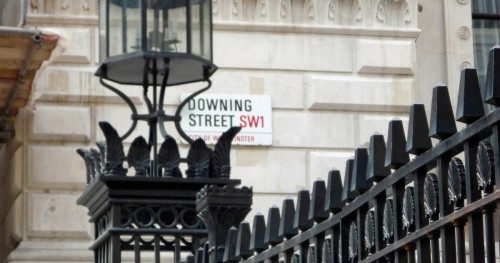
Freelancers reminded that labels don’t decide or alter employment status
Any “label” that freelancer and client apply to their working relationship together counts but only as a slim, single factor, an Employment Appeal Tribunal (EAT) has clarified.
Furthermore, even if freelancer and client both agree on what the label should state, “self-employment” for example, such unanimity cannot alter or decide their true relationship.
And thirdly, if the label which both the agreeing parties apply relates to the important-sounding issue of taxation, the label (by itself) still does not determine the relationship's status.
'Attached label should be only one factor'
This trio of principles isn’t going to surprise today’s veteran employment status advisers, as all of them were laid down in two leading status cases, first in 1968 and then in 1980.
But the three principles from the two cases (Ready Mixed Concrete and Woods V West, respectively), have had their importance freshly reinforced by a new judgment involving a self-employed carpenter.
In Mr L Richards V Waterfield Homes Ltd & Another (2022), an EAT judge said that the “label attached [to the relationship] should have been only one of the factors” taken into account in trying to determine it as employed or self-employed.
'Completely wrong'
But getting “completely the wrong” end of the stick according to dispute expert Tom Wallace, a lower court -- the Employment Tribunal (ET) -- placed too much stock in carpenter Mr Richards using an HMRC scheme for self-employed people in his sector.
In fact, the ET in 2020 rejected Mr Richards’ claim that he had been an employee of his engager Waterfield Homes from the outset in 2010, rather from when he and the company agreed he should be moved from self-employment to employment in 2018, on the sole basis that he was registered with the scheme -- the Construction Industry Scheme.
“[However], throughout [his engagement], the relationship had been ‘close to an employment one’, save that Mr Richards had worked under CIS,” reflects contract lawyer Roger Sinclair, quoting from the EAT’s judgment, which notes the carpenter worked normal working-hours Monday to Friday and solely for one customer (Waterfield Homes).
'Balanced decision based on overall picture'
A consultant at egos Ltd, Mr Sinclair continued to FreelanceUK: “Use of the CIS for tax purposes is required in the case of self-employed workers in the construction sector.
“But the simple fact that the worker and the engager are operating under CIS -- first; does not necessarily mean that they are correct in doing so.
“And second; does not of itself determine the relationship, for employment law purposes, to be one of self-employment.”
A former solicitor who now specialises in legal issues for people who work for themselves, Mr Sinclair advises that “all factors must be taken into account, and a balanced decision made, based on the overall picture.”
'Tax status isn't a determinative factor'
So in other words, “all the facts [of an engagement] need to be considered in the round when deciding status,” says WTT Group, where Mr Wallace is tax investigations director.
“The tax status will be one factor in considering whether a contract of employment existed, but it will not be the determinative factor,” he said, adding to FreelanceUK:
“[In Richards V Waterfield…], the EAT judge said that the long-established principle in Woods Ltd v West of 1980 still held good.
“And that is; that the label that both parties choose to use to describe their relationship cannot alter or decide their true relationship.”
'Irrelevant that the parties declared it as something else'
Curiously, says law firm Chartergates, it was initially the same label applied by both parties – “self-employment,” given that both Richards and Waterfield started out as business-to-business.
But as Mr Justice MacKenna said in the Ready Mixed Concrete case: “Whether the relation between the parties to the contract is that of master and servant or otherwise is a conclusion of law…[so] it is irrelevant that the parties have declared it to be something else.”
Now, and in light of Richards being found by the EAT to be an employee, it also looks irrelevant for employment law purposes whether an individual is registered with the Construction Industry Scheme.
'CIS -- little more than a scheme for correct HMRC payment'
In an update, Chartergates confirmed: “In reality, CIS is little more (for employment law purposes) than a HMRC scheme for ensuring payment of the correct tax.
"It is not conclusive of status for employment law purposes.”
'May open the door to backdated holiday pay claim'
In the EAT’s judgment, CIS is described as being “inconsistent with being an employee” but formerly of the tax office, Mr Wallace says the EAT rightly recognised that the rest of Richards’ engagement was consistent with employment.
“His status for tax over the years was only one factor to consider -- and in fact, [his registration with CIS] was probably the only [factor] that pointed to anything but an employment relationship.
“The judge therefore remitted the case back to the ET," the WTT director said, "with a direction that they should proceed to hear the case again on the basis that Mr Richards is an employee.”
At egos, reflected Mr Sinclair: “This result may open the door to claims by Mr Richards based on employment rights. For example for holiday pay -- and backdated to 2010.”



Comment
Log in or create your account to react to the article.